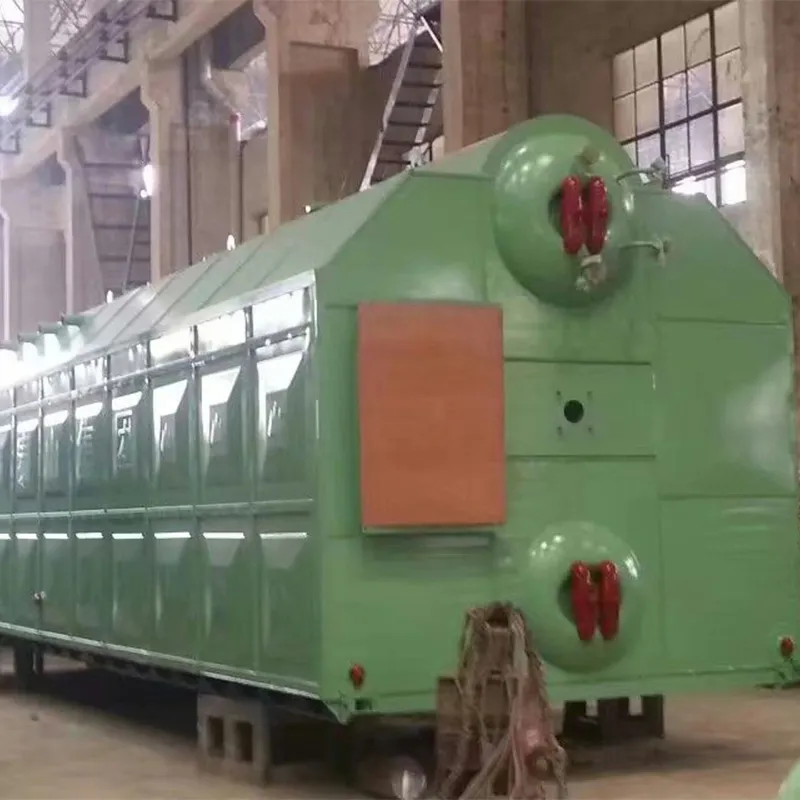coal fired steam boiler
The Role of Coal-Fired Steam Boilers in Energy Production
Coal-fired steam boilers have played a crucial role in energy production for over a century, providing steam to generate electricity for homes, industries, and businesses. Despite the growing emphasis on renewable energy sources, coal remains a significant player in the global energy landscape due to its abundance, cost-effectiveness, and reliability.
A coal-fired steam boiler operates on a relatively simple principle. It burns coal in a combustion chamber, producing heat that converts water in a boiler tube into steam. This steam then drives a turbine connected to a generator, converting thermal energy into electrical energy. The process essentially consists of converting the chemical energy stored in coal into mechanical energy, which then becomes electrical energy.
The Role of Coal-Fired Steam Boilers in Energy Production
However, it’s essential to acknowledge the environmental concerns associated with coal-fired steam boilers. The combustion of coal emits various pollutants, including carbon dioxide (CO2), sulfur dioxide (SO2), and nitrogen oxides (NOx), which contribute to climate change and air pollution. As a response to these environmental challenges, many countries are implementing stricter emissions regulations and investing in carbon capture and storage technologies to mitigate the impact of coal-fired power generation.
coal fired steam boiler

Moreover, the shift towards renewable energy sources and natural gas has prompted a reevaluation of coal's role in the energy mix. Governments and industries are increasingly investing in solar, wind, and hydropower, which have lower environmental impacts. Some countries have begun to phase out coal entirely, aiming for carbon neutrality in the coming decades. Despite this, coal-fired steam boilers can still play a transitional role in meeting energy demands while newer technologies are developed and implemented.
In recent years, emerging technologies have fostered opportunities for improving coal-fired steam boiler efficiency. Fluidized bed combustion, for instance, is a newer technology that allows for lower combustion temperatures, resulting in reduced emissions. Additionally, integrated gasification combined cycle (IGCC) systems enable power plants to convert coal into gas before combustion, improving efficiency and lowering emissions.
The future of coal-fired steam boilers will likely involve a blend of innovation and adaptation. As the energy market evolves, there may be opportunities to retrofit existing coal plants for cleaner technologies or to integrate renewable energy systems. Hybrid systems that combine coal with biomass or other renewable fuels could emerge as feasible transitional solutions.
In conclusion, while coal-fired steam boilers have been instrumental in shaping modern energy production, their future is under scrutiny amid the push for cleaner alternatives. Balancing energy needs with environmental responsibility will be a critical challenge moving forward. By embracing technological advancements and innovative strategies, it is possible to harness the benefits of coal while minimizing its environmental impacts, thereby ensuring a sustainable energy future.
-
Leading Electric Steam Boiler Manufacturers for IndustryNewsAug.06,2025
-
Top Electric Steam Boiler Manufacturers | AI EfficiencyNewsAug.04,2025
-
Efficient Thermal Oil Boilers with AI Optimization | Superior PerformanceNewsAug.03,2025
-
Custom Steam Boilers Manufacturer | AI-Enhanced EfficiencyNewsJul.31,2025
-
Top Electric Steam Boiler Makers | AI-OptimizedNewsJul.31,2025
-
Top Electric Steam Boiler Manufacturers - High Efficiency SolutionsNewsJul.30,2025

